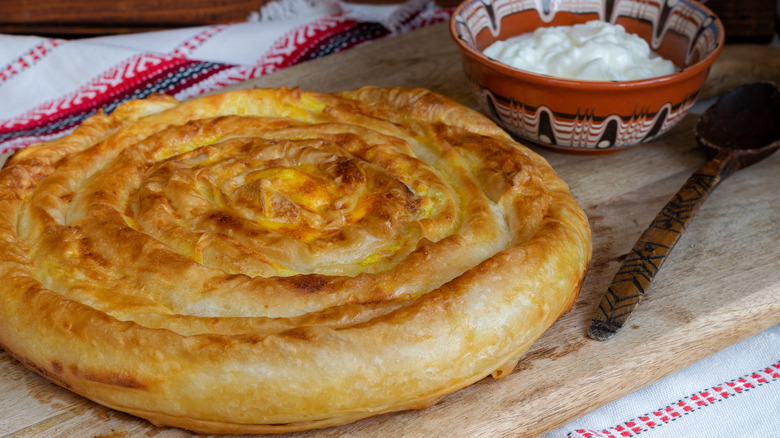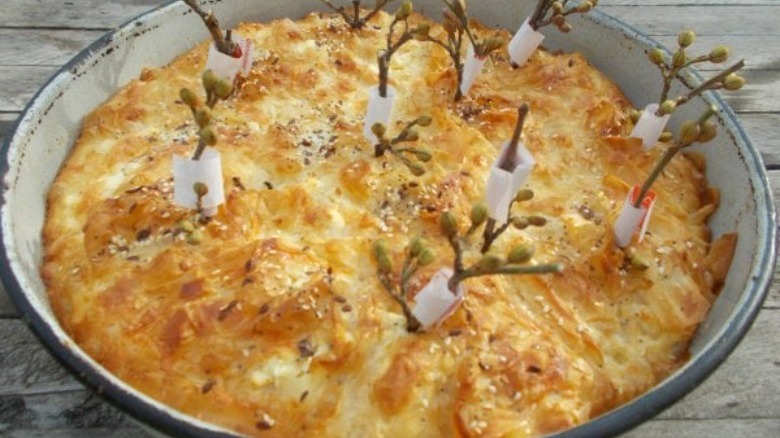The Banitsa Egg Pastry May Hide A Flower Branch Inside
Perhaps the most well-known type of "fortune-telling" pastry in the U.S. is the king cake, a dessert that was originally baked to celebrate the January 6 holiday of Epiphany but may now be more associated with the tourist-friendly holiday of Mardi Gras. King cakes typically include a small plastic baby, and whoever finds the baby is said to be rewarded with a year's worth of good fortune — at least until the next holiday rolls around, at which point they're stuck with having to bake or buy a new king cake.
In Europe, however, there are a number of different examples of desserts containing good luck charms. The U.K.'s Royal Mint issues silver sixpences each year for inclusion in the traditional British Christmas pudding, while in Ireland a charm-filled fruitcake called barmbrack is part of many a Halloween celebration. In Bulgaria, too, there's also a holiday pastry filled with charms, or, as they're known there, "kusmeti." The most important one of these charms isn't a plastic toy or a coin, but something that can only be found in nature.
A savory specialty chock-full of lucky charms
Banitsa is a Bulgarian holiday staple that typically appears on the table for Christmas or New Year's Eve. It's a savory pastry with a filling made from cheese, eggs, and yogurt layered between sheets of phyllo dough and is quite similar to burek, the flaky filled pastry that's considered to be a national dish of Balkan countries and is popular for breakfast in Bosnia and Herzegovina. While banitsa can be eaten as an everyday item, particularly for breakfast, the holiday ones typically include baked-in charms such as coins, trinkets, or paper fortunes. The luckiest charm of all, however, is a small branch of budding dogwood.
Dogwood stands for the ever-popular New Year's wishes of long life and good health and there will often be a piece in the banitsa for everyone at the table. According to some traditions, the branches that are baked into the banitsa are thrown into the fire after the pastry is eaten. Should the twigs pop as they burn, this brings even more good luck. Because it's one of the first trees to bloom in Bulgaria, dogwood has symbolic significance to it. Late December still seems a bit soon for any trees to start budding, however, so we're not quite sure how flowering branches are sourced for the winter holidays. Perhaps they're picked in spring, or maybe they're greenhouse-grown — there's certainly quite a market for them, after all, as the holidays wouldn't be complete without them.

